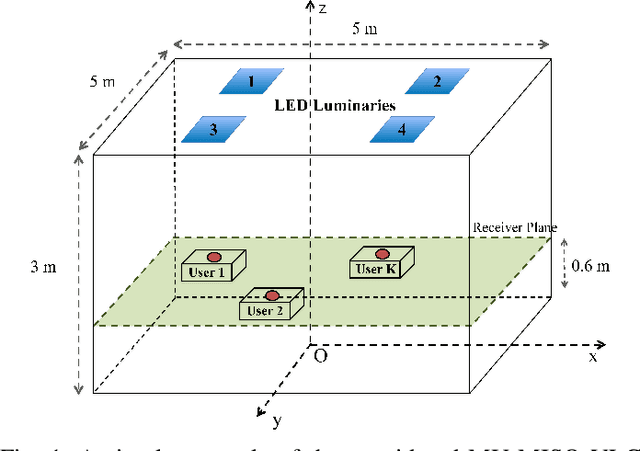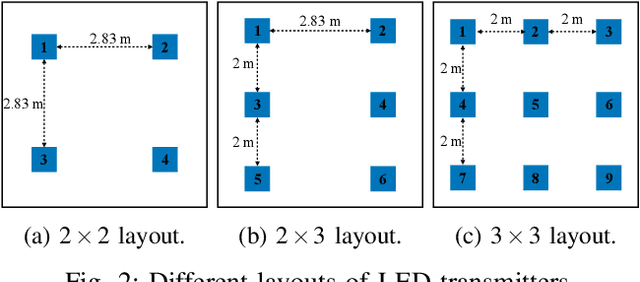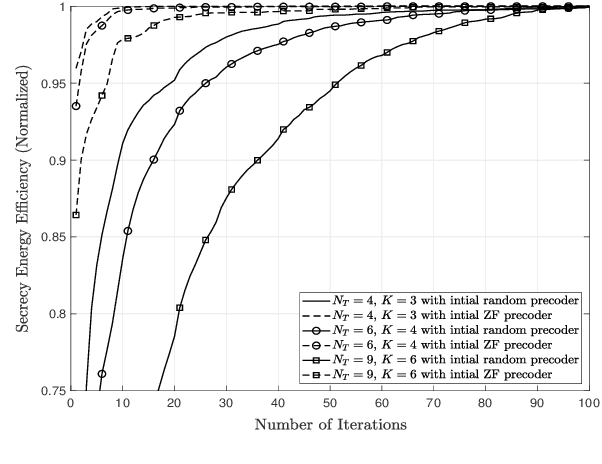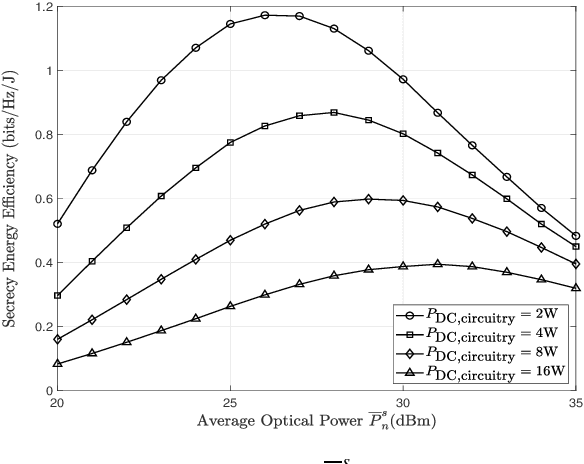Thanh V. Pham
Secrecy Performance Analysis of Space-to-Ground Optical Satellite Communications
Feb 21, 2024Abstract:Free-space optics (FSO)-based satellite communication systems have recently received considerable attention due to their enhanced capacity compared to their radio frequency (RF) counterparts. This paper analyzes the performance of physical layer security of space-to-ground intensity modulation/direct detection FSO satellite links under the effect of atmospheric loss, misalignment, cloud attenuation, and atmospheric turbulence-induced fading. Specifically, a wiretap channel consisting of a legitimate transmitter Alice (i.e., the satellite), a legitimate user Bob, and an eavesdropper Eve over turbulence channels modeled by the Fisher-Snedecor $\mathcal{F}$ distribution is considered. The secrecy performance in terms of the average secrecy capacity, secrecy outage probability, and strictly positive secrecy capacity are derived in closed-form. Simulation results reveal significant impacts of satellite altitude, zenith angle, and turbulence strength on the secrecy performance.
Energy-Efficient Precoding for Multi-User Visible Light Communication with Confidential Messages
Feb 22, 2021



Abstract:In this paper, an energy-efficient precoding scheme is designed for multi-user visible light communication (VLC) systems in the context of physical layer security, where users' messages are kept mutually confidential. The design problem is shown to be non-convex fractional programming, therefore Dinkelbach algorithm and convex-concave procedure (CCCP) based on the first-order Taylor approximation are utilized to tackle the problem. Numerical results are performed to show the convergence behaviors and the performance of the proposed solution for different parameter settings.
 Add to Chrome
Add to Chrome Add to Firefox
Add to Firefox Add to Edge
Add to Edge